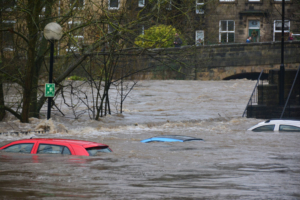Office Emergency Plan: Readiness in the Workplace
Lets discuss office emergency plans and being ready in the workplace. Workplace emergencies can happen anytime. Whether you work in a traditional office, a retail environment, a trade or the food industry, having a well-thought-out emergency plan is important. In this article, we’ll explore this and offer suggestions for creating an emergency plan that suits various workplace settings.
Role Play Example:
Let me tell you about the (fictional) day we had a small fire on the 25th floor. It was a sure test of our emergency plan, and here’s how we successfully implemented it step by step:
Step 1: Immediate Assessment
First things first, when we realized there was a small fire, we didn’t panic. We immediately assessed the situation to confirm that it was indeed a fire. Since it was a contained fire, my co-worker discharged the fire extinguisher. Safety was our top priority.
Step 2: Alert the Fire Department
Without hesitation, we called the fire department to report the incident. We provided them with all the necessary details, like the location and the size of the fire.
Step 3: Activate the Fire Alarm
We knew the fire alarms worked because of regular fire drills, they were our first clue that there was a possible fire. The blaring alarms and flashing strobe lights throughout the building signaled to everyone that evacuation was necessary.
Step 4: Communicate with Your Employees
Through our intercom system, we calmly and clearly informed our employees about the fire and instructed them to evacuate immediately. We stressed that personal belongings should be left behind, taking only essentials like wallets and keys. Since we had ran fire drills earlier in the year, we were efficient and panic was minimal.
Step 5: Designate Evacuation Routes
We reminded everyone of the primary and secondary evacuation routes they were already familiar with. Using the nearest stairwell was emphasized, and we made it clear that elevators were off-limits during a fire.
Step 6: Appoint Floor Wardens
Our floor wardens, an integral part of our emergency plan, assisted in the evacuation. They guided employees to the stairwells, ensured no one was left behind, and reported to the designated assembly point.
Step 7: Check for Stragglers
Before leaving the floor ourselves, we conducted a final check to ensure no one was left behind. Every office, meeting room, restroom, and common area was carefully inspected to confirm that everyone had evacuated.
Step 8: Evacuate to the Assembly Point
With our employees calmly descending the stairs, we led them to the ground floor and the designated assembly point. It was important that they stayed there and didn’t attempt to re-enter the building or leave the muster spot until it was declared safe by emergency personnel.
Step 9: Report to Emergency Services
A colleague reported to the arriving fire department about the situation and informed them if there were any missing employees.
Step 10: Account for Employees
To account for everyone’s safety, we used a roll call and check-in system at the assembly point. It was a relief to confirm that everyone had safely evacuated.
Step 11: Wait for All-Clear
We waited for the fire department to give us the all-clear before considering re-entry. Safety first, always.
Step 12: Debrief and Review
After the incident, we gathered our employees for a debriefing session. We discussed what went well and what could be improved in our evacuation process. This feedback was invaluable for refining our emergency plan for the future.
Why Workplace Emergency Preparedness Matters
Workplace emergencies can range from natural disasters such as earthquakes, fires, and floods to human-made incidents like active shooters, chemical spills, or power outages. Regardless of the type of emergency, having a preparedness plan in place can mitigate risks, reduce injuries, and save lives. Here’s why workplace emergency preparedness matters:
- Employee Safety: The safety and well-being of employees should always be a top priority. A well-executed emergency plan can help employees evacuate or take shelter in a safe and organized manner.
- “The Emergency Management Act in Alberta provides the legislative framework for local and provincial management of emergencies and disasters. It was last amended to address the growing need for local and provincial states of emergencies to work together during emergencies and disasters, including wildfires, floods and pandemics.” Each province and territory will have a similar resource to review.
- Legal Compliance: In many regions, there are legal requirements for workplace emergency preparedness. Non-compliance can lead to fines and legal liabilities.
- Peace of Mind: Knowing that there is a plan in place can reduce anxiety and panic during emergencies, making it easier for employees to respond effectively.

Creating a Workplace Emergency Plan
Identify Emergency Roles: Assign specific roles to employees, such as evacuation coordinators, first aid providers, and communication coordinators.
Evacuation Routes: Clearly mark and communicate evacuation routes and assembly points. Conduct regular drills to ensure everyone knows what to do.
Communication:
Establish a system for alerting employees about emergencies, considering an alarm system and/or a phone tree.
- What is a phone tree? This is a hierarchical structure of individuals or participants, with each person responsible for contacting a set number of people in the network. Here’s how it works:
- Initiator/Leader: The person at the top of the phone tree initiates the process. This could be an organization’s leader, an emergency coordinator, or another designated individual. They contact Branch Leaders.
- Branch Leaders: Each branch leader is responsible for contacting a predefined number of people, and they, in turn, pass on the message to their assigned contacts.
- The process continues down the tree until the message reaches all the participants in the network.
Emergency Supplies: Maintain emergency kits with essentials like first aid supplies, flashlights, and batteries. Have a fire extinguisher, water wash stations, and other work-appropriate emergency supplies on site.
Employee information: Ensure that emergency contacts, allergy information or medical concerns is readily available for emergency responders.
Safety:
Food Safety: In addition to employee safety, protect the integrity of food products. Have protocols and procedures in place to secure food during emergencies. Follow CFIA (Canadian Food Inspection Agency) & HACCP (Hazard Analysis Critical Control Points) guidelines for safe food practices.
Equipment Safety: Train employees to safely operate equipment, and how to shut down gas lines or power. This is especially important in the event of a fire or gas leak.
General Tips for All Workplaces:
- Regular Training: Conduct training and drills for employees to practice the emergency plan.
- Digital Resources: Consider using emergency notification apps and digital platforms for real-time communication, or the above mentioned phone tree.
- Review and Update: Regularly review and update the emergency plan to reflect changes in personnel, procedures, or the physical layout of the workplace.
Real-Life Canadian Examples of Emergencies That Utilized Emergency Plans
Ice Storm of 1998 (Quebec and Ontario)
-
- Category: Natural Disaster (Ice Storm)
- Example: The Ice Storm of 1998 was one of Canada’s most significant natural disasters in Eastern Canada. It led to extensive power outages, widespread damage, and multiple challenges for affected communities in Quebec and Ontario. Canadian Armed Forces & government resources were deployed to provide assistance.
Power Outage Preparedness: Northeast Blackout (2003)
-
- Category: Infrastructure and Power Outage
- Example: The 2003 Northeast blackout affected parts of the U.S. and Canada, leaving millions without power. Emergency services worked to ensure the safety of citizens, and backup power systems were used in critical facilities. This event emphasized the need for well-prepared emergency response plans for power outages.
Fort McMurray Wildfire (2016)
-
- Category: Natural Disaster (Wildfire)
- Example: The Fort McMurray wildfire in Alberta in 2016 It resulted in the evacuation of thousands of residents and the destruction of over 2400 homes and structures. Emergency plans put into action and were mobilized to combat the fire, manage evacuations, and provide support to those affected.
Listeria Outbreak at Maple Leaf Foods (2008)
-
- Category: Food Safety and Contamination
- Example: The Listeria outbreak at Maple Leaf Foods in Canada in 2008 is a notable example of a food industry emergency. The company initiated a massive recall of its products and worked with regulatory authorities. Public health authorities and Maple Leaf Foods conducted a comprehensive investigation to determine the source of the Listeria contamination. This included traceback efforts to identify the specific points in the production process where contamination could have occurred. Then they implemented updated food safety measures and testing into their protocol to address any future situations.
2013 Calgary Flood
-
- Category: Natural Disaster (Flood)
- Example: In 2013, severe flooding affected Calgary and other areas in Alberta. The emergency response involved the activation of emergency plans by local authorities, including the evacuation of residents from flood-prone areas and the coordination of relief efforts. The event highlighted the need for effective flood management strategies and flood preparedness.
Toronto Ice Storm (2013)
-
- Category: Natural Disaster (Ice Storm)
- Example: In December 2013, Toronto and surrounding areas experienced a significant ice storm that led to power outages and transportation disruptions. Emergency plans were implemented at the municipal and provincial levels to provide assistance to affected communities, restore power, and ensure public safety.
Conclusion:
Preparedness in the workplace is an important aspect of ensuring employee safety and business continuity during emergencies. A well-crafted emergency plan, tailored to the specific needs of different workplace environments, can make a significant difference in safeguarding lives and assets. By taking proactive steps to create and implement an effective emergency plan, you can better protect your employees and ensure that your workplace remains resilient in the face of unexpected events.



